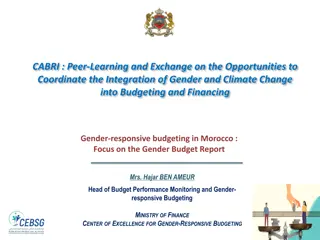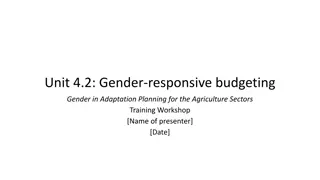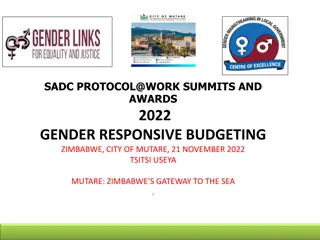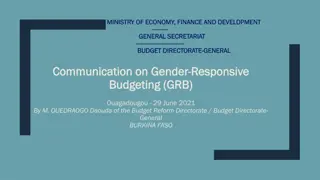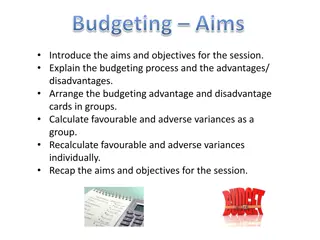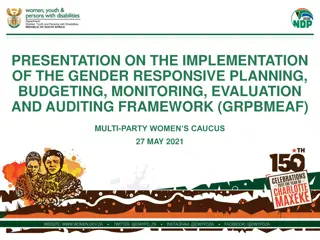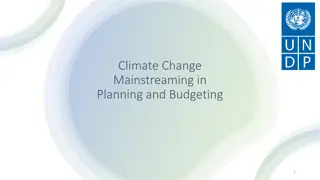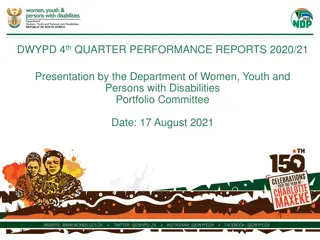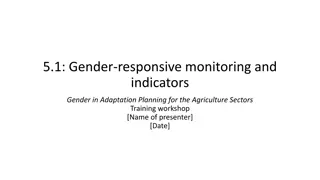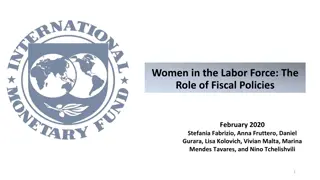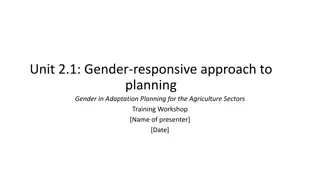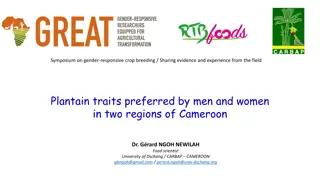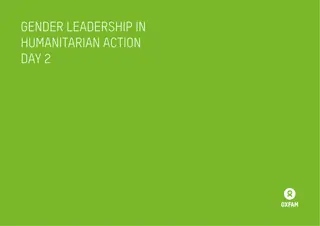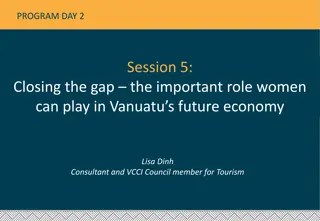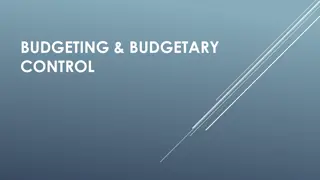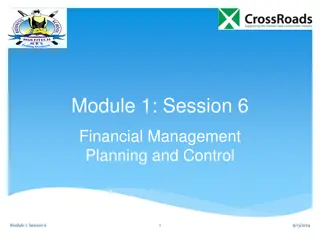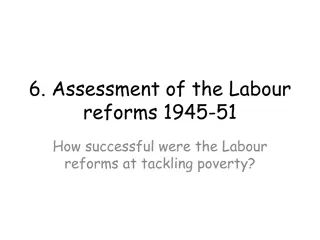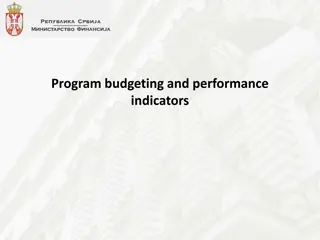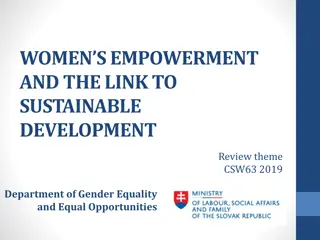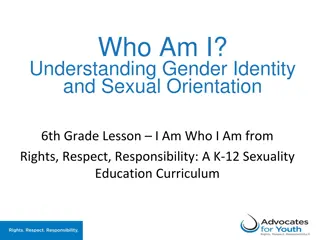Advancing Gender-Responsive Climate Budgeting: Goals and Reforms
Explore the intersection of gender equality and climate change through Gender-Responsive Budgeting (GRB) and Gender-Responsive Climate Budgeting (GRCB). Learn about the objectives of double-mainstreaming, improving program design, and integrating gender into budget initiatives to enhance economic and social outcomes. Discover key reforms to enhance GRCB across the budget cycle.
Download Presentation

Please find below an Image/Link to download the presentation.
The content on the website is provided AS IS for your information and personal use only. It may not be sold, licensed, or shared on other websites without obtaining consent from the author. Download presentation by click this link. If you encounter any issues during the download, it is possible that the publisher has removed the file from their server.
E N D
Presentation Transcript
Welcome Address Philipp Krause, Head Technical Team CABRI
Structure of the event Over the next 2 days, countries will present on their experience with gender responsive budgeting (GRB) and gender responsive climate budgeting (GRCB) The discussions will consider how GRCB can be strengthened for improved economic and social outcomes Knowledge products: Keynote paper: Opportunities to Coordinate the Integration of Gender and Climate Change into Budgeting and Finance Policy brief: The Integration of Climate Change into Budgeting and Finance All knowledge products are available on the website www.cabri-sbo.org
Experience with GRCB Gender and climate change are two cross-sectoral priorities which are central to achieving the Sustainable Development Goals (SDGs) Many African countries have some experience with GRB and CRB, however the two have largely been implemented separately There is increasing recognition of the linkages between gender equality and climate change adaptation and mitigation o Women could disproportionately be affected by climate change (increasing existing gender inequality) given their social and political status in society o Women are active change agents and central to building community resilience Recent calls for the join integration or double-mainstreaming of gender and climate change into budgeting and finance
Objectives of Double-Mainstreaming Gender and Climate Change Wider objectives Reduce the impact of climate change on gender inequality Mobilise the capacity of women to implement adaptation/mitigation Immediate objectives Improve programme design and influence budget prioritisation Outcomes Build more rigorous and credible methods for double-mainstreaming (or GRCB) by exchanging lessons from GRB and CRB Integrate gender into CRB initiatives - conduct future CRB and GRB initiatives jointly - add gender to ongoing/planned CRB - retrofit gender into existing CRB (?) Raise awareness of benefits from double-mainstreaming
GRCB Reforms Reforms to systems and practices across the budget cycle that take into account gender concerns and opportunities when planning and delivering climate change mitigation and adaptation Examples Include gender in climate change strategies and ensuring cross- sectoral gender/climate bodies collaborate Budget submissions by line ministries which demonstrate both gender and climate related benefits Tag/score budget programmes according to their contribution to gender equality and to climate mitigation/adaptation Monitor/review/evaluate trends and patterns in tagged programmes Accountability actors (parliament, civils society, media) follow and comment on gender and climate programmes Budget formulation Budget approval Budget execution Budget evaluation
Enabling Conditions for CRCB Lessons from past experiences with cross-cutting theme mainstreaming highlights key enabling conditions Source: OECD, 2014
Challenges with GRCB Competition amongst many cross-sectoral priorities (eg 17 SDGs) may dilute prioritisation of gender and climate Basic classification methods are well-established and applied to both gender and climate but there is no consensus on scoring the degree of contribution to gender and mitigation/adaptation in a way that can be guaranteed to avoid suspicions about greenwashing or genderwashing Programme budget reforms are already challenging without adding GRCB Some international funders are increasingly mainstreaming climate into their development programmes, so GCRB needs to go beyond climate funds Governments are happy with GRCB when trends/patterns are positive, but less keen when the trend is negative Capacity , although this may relate more to unclear institutional roles and methods than a lack of staff knowledge/skills
Concluding remarks Coordinating the integration of gender and climate change may strengthen the effectiveness of public expenditure and reprioritisation to reflect increased benefits While limited, there are some countries in Africa that have begun to implement gender responsive climate budgeting The most appropriate measures in each country will depend on their strategic objectives and the particularities of their PFM systems. There are substantial challenges (both technical and political) and experience with GRB suggests that GRCB will need support for a prolonged period of time (at least 10 years) Successful reforms will need to engage multiple stakeholders, including civil society organisations who can be important allies





